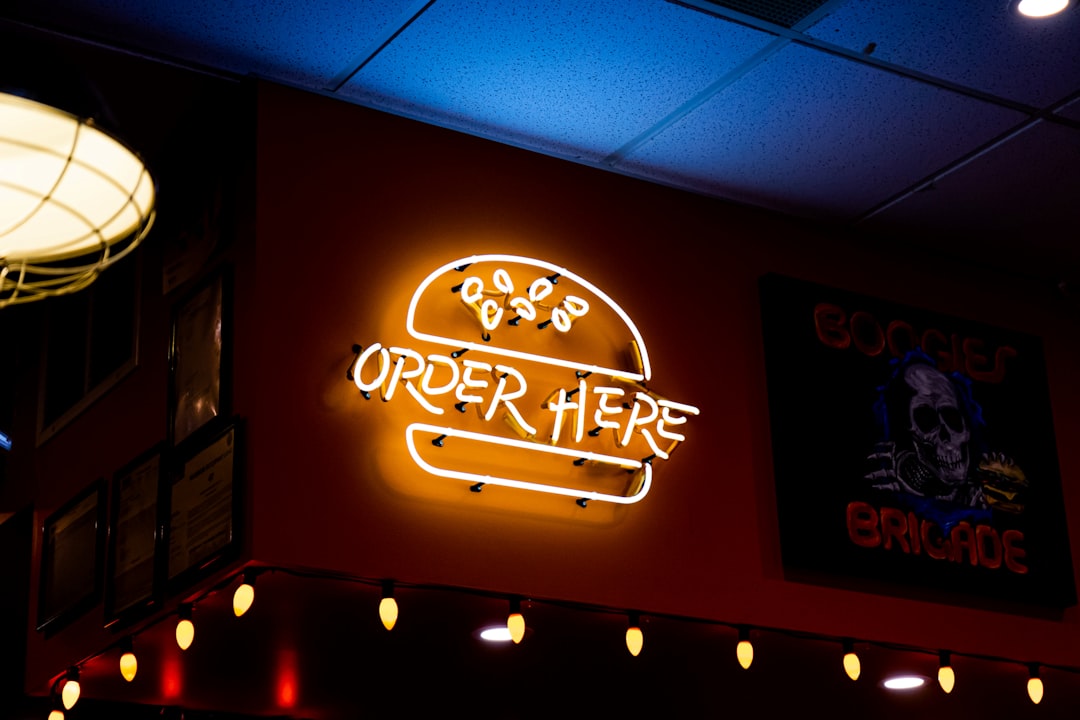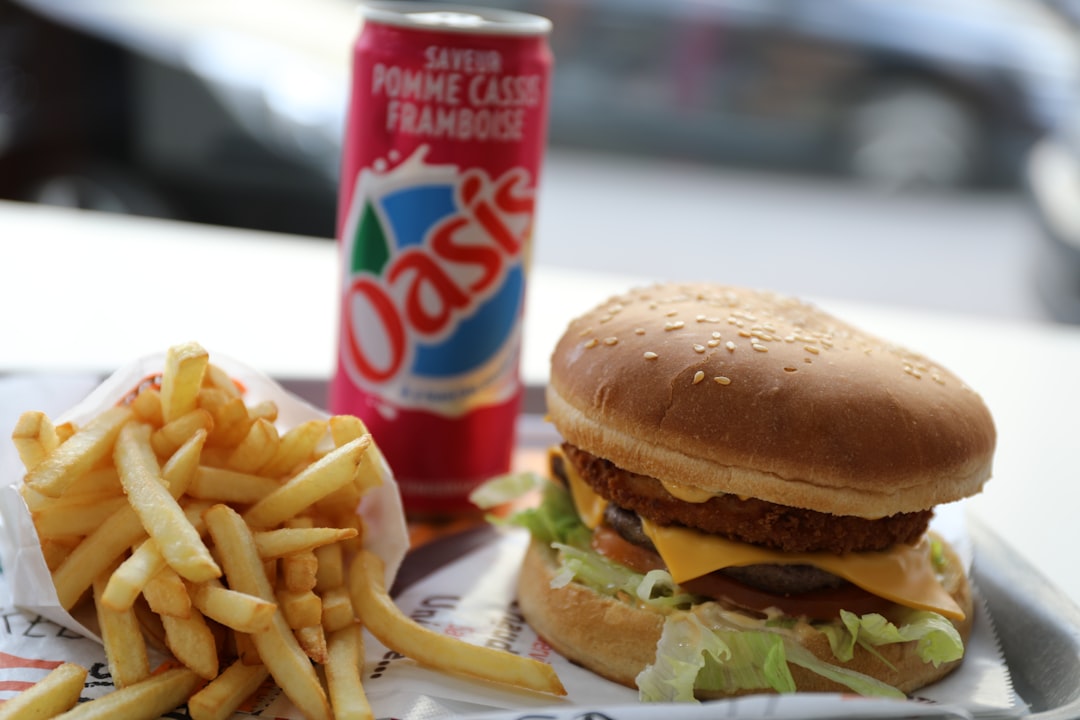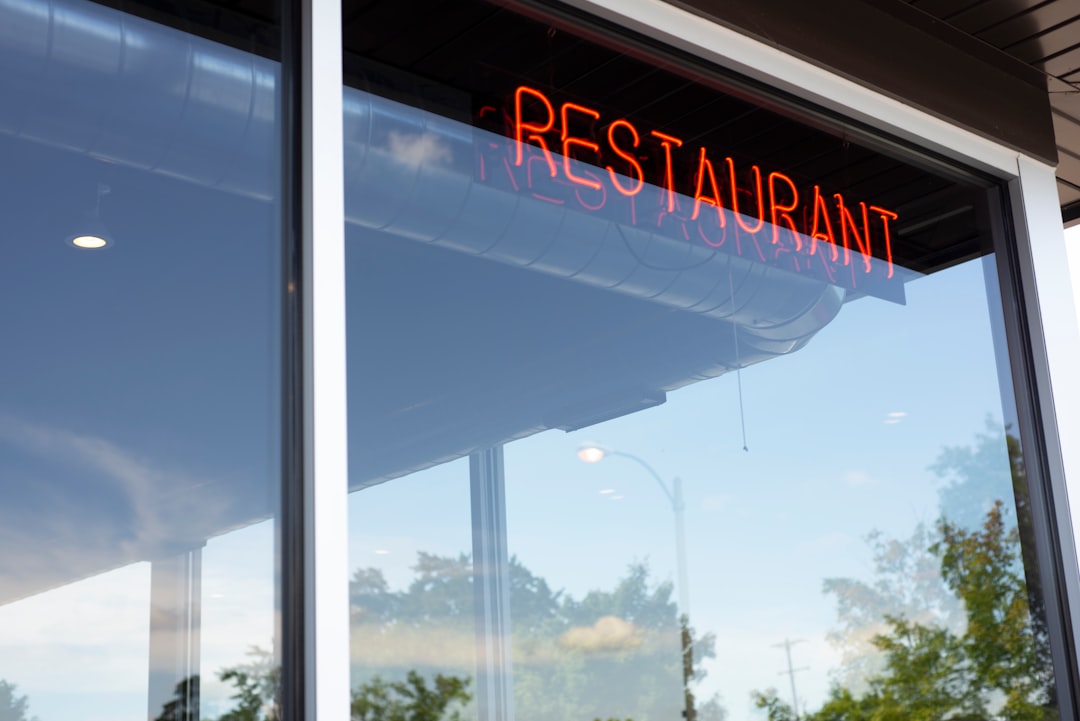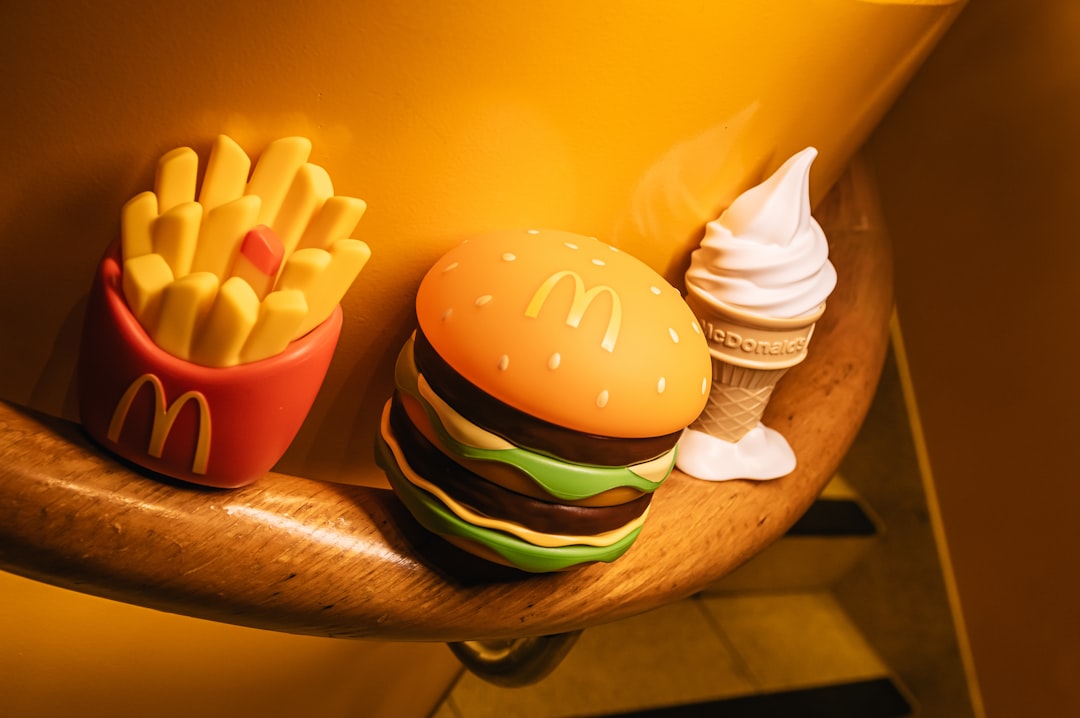

Engage prospects with a scan and streamline customer engagement with FREE QR code marketing tools by Sona – no strings attached!
Create a Free QR CodeFree consultation

No commitment

Engage prospects with a scan and streamline customer engagement with FREE QR code marketing tools by Sona – no strings attached!
Create a Free QR CodeFree consultation

No commitment
Fast food restaurants are in a constant race to deliver faster service, superior convenience, and memorable customer experiences. In an industry known for high volume and rapid decision-making, even minor slowdowns in the ordering process can cost revenue and erode customer loyalty. Traditional analog approaches such as counter-based queues, printed menus, and manual loyalty cards often create friction, fail to capture critical customer data, and miss valuable opportunities to engage or upsell at the moment of intent.
QR code technology is at the forefront of the digital transformation sweeping through fast food. From instant menu access to contactless payment, QR codes empower quick-service restaurants to streamline ordering, increase throughput, and personalize the path to purchase while unlocking rich data previously lost in anonymous, high-speed transactions. Modern solutions now enable restaurants to consolidate these signals, capturing high-value prospects for targeted engagement and ongoing loyalty with Sona QR’s product overview.
By integrating QR codes into every customer touchpoint, fast food restaurants can unlock not just faster ordering and real-time menu adjustments, but also a holistic view of customer interest and behavior. This insight allows for more precise marketing activations and dynamic content delivery, helping operators shift from missed interactions to growth opportunities at every scan. Explore how QR codes can be used to speed up ordering and drive data-led growth for fast food brands.

In high-traffic fast food settings, long queues and clunky workflows often leave staff juggling orders while hurried guests abandon carts or grow frustrated. The result can be lost revenue and dissatisfied customers. QR codes bridge the gap between physical and digital ordering experiences, eliminating lines, reducing wait times, and making it easy for guests to place and personalize orders while capturing vital customer signals too often missed in traditional setups.
Here is how to do it effectively, with a focus on replacing outdated processes and creating measurable wins:
Modern QR workflows replace printed menus, manual upsell scripts, and paper loyalty cards with seamless, self-serve digital experiences. The payoff is twofold: operational speed and rich account-level attribution. Managers can finally see where demand originates, which channels accelerate ordering, and how to retarget guests based on real behavior, not assumptions.
Beyond speed, QR codes simplify CX for every guest. There is no app requirement, no waiting for a terminal, and no need to reprint anything when items sell out or promotions change. Guests get clarity and convenience, staff get fewer order errors to correct, and leaders gain the data they need to make quick, confident decisions.
Fast food depends on moving customers efficiently through the funnel, often in environments where a single extra step means lost sales. Operators face a persistent challenge when translating fast-paced foot traffic into meaningful digital connections, especially when much of that traffic remains anonymous. QR codes solve for speed and measurability while enabling the kind of personalization that used to be out of reach for quick-service brands.
They also provide agility in a volatile operating environment. Menu items rotate frequently, hourly demand surges are common, and promotions must be updated on short notice. With dynamic QR codes, content changes are instant, trackable, and centrally controlled, removing the cost and delay of reprinting while ensuring consistency across locations.
Whether placed on menu boards, table tents, receipts, or packaging, QR codes turn anonymous visits into ongoing, data-powered relationships. Done well, they remove the guesswork from print and in-store signage, and they do it without additional hardware or software installs for the guest.

Many fast food brands start with basic QR deployments, then discover they have missed high-value data or sacrificed engagement because the QR formats did not match real-world scenarios. Selecting the right type of QR code for each touchpoint is essential to delivering value and capturing meaningful signals.
The following formats have the greatest impact in quick-service environments where speed and scale matter:
Dynamic QR formats remove the need to reprint visuals when campaigns change and let you track performance beyond raw scan counts. Platforms like Sona QR centralize these codes so marketing and operations can coordinate updates, share insights, and execute experiments without confusion.

Fast food touchpoints are fragmented across counters, drive-thrus, packaging, and out-of-home media. Without a unified QR strategy, data remains siloed and high-value prospects slip through unseen. Mapping the customer journey and placing QR codes where impatience is highest and information is most needed unlocks meaningful wins.
Prioritize placements that convert idle time into action. During line waits, drive-thru decision moments, and post-purchase windows, customers are receptive to scanning. Use QR codes to shorten the path to ordering, bring clarity to complex menus, and create a next step after the meal that feeds loyalty and upsell opportunities.
A growth-oriented QR plan ensures all scan data flows into a consolidated account view, not isolated spreadsheets. When campaigns are unified and attributed, you can compare performance across placements, scale the winners quickly, and focus on the touchpoints that drive the most incremental revenue.

Traditional ordering models often overlook high-value interactions. Anonymous walk-ins leave without a trace, deal-seekers remain invisible to marketing teams, and cross-sell triggers go unused. QR-driven ordering and engagement flips this reality by attaching a measurable action to every surface.
Here are three core use cases tied to common customer interactions:
Each use case adds speed and clarity for guests while increasing data capture for the brand. Over time, these scans generate a rich signals layer that guides creative, merchandising, and store-level operations decisions.
Missing visibility into who engages with campaigns limits remarketing and personalization. QR scan data changes this by capturing intent, context, and behavior in real time. By deploying unique QR codes across placements and stages of the journey, you can segment audiences automatically and trigger actions that match their needs.
Start by defining the outcomes you want. For example, you might want to grow lunch traffic on weekdays, encourage app installs among late-night visitors, or re-engage customers who have not ordered in 30 days. Then map each outcome to a scan point and a follow-up flow that continues the conversation without guesswork.
For example, a QR-linked table menu can capture a first-time lunch guest, deliver a mobile-only add-on offer at checkout, and then retarget that same guest with a lunch combo coupon midweek. This is a closed loop that turns on-the-spot intent into predictable, repeatable revenue.
Measuring the real-world impact of marketing channels is often difficult in fast food due to dispersed placements and fragmented data. QR codes unify offline and online journeys by funneling every scan into a central system where engagement and conversion can be tracked, compared, and optimized.
Treat every surface as a conversion asset. From in-store visuals and drive-thru panels to mailers and social posts, your creative should invite scanning and provide a benefit that feels immediate. The payoff is a higher rate of measurable interactions and a clearer line from spend to sales.
With a centralized QR platform like Sona QR, you can manage all codes, monitor performance by placement and time, and sync scan data with your CRM and ad platforms. This creates a connected offline-to-online funnel where every scan is trackable and actionable.
A disciplined rollout turns QR from a clever idea into a repeatable growth engine. Use the following five steps to move from concept to live deployment while maintaining quality, compliance, and measurability across stores.
Start by defining a concrete operational or marketing goal. For example, address lunchtime queue overload by enabling mobile pre-ordering through table tent QR codes that let guests browse and pay before reaching the counter. This smooths peak periods, raises throughput, and generates granular scan data for retargeting and forecasting.
Clarify the business metric you will impact, such as average wait time, ticket size, or loyalty enrollments. Set a baseline, then quantify a target improvement. With Sona QR, you can tag scans by store and time to isolate results and share wins with staff.
Choose a code type that matches your goal and needed flexibility. For most fast food use cases, dynamic QR codes are the best fit because they allow real-time updates, analytics, and destination changes without reprinting. Use static codes only for fixed, evergreen destinations that do not require attribution or editing.
If your aim includes data capture, retargeting, or experimentation, dynamic codes are essential. Sona QR supports dynamic destinations, UTM templates, and per-location link routing so you can operate at scale without clutter.
Design for scannability and clarity. Incorporate brand colors and a simple visual frame, but avoid excessive decoration that reduces contrast. Pair the code with a concise call to action such as “Scan to order” or “Scan for today’s deal.” Ensure size, contrast, and quiet zone spacing are appropriate for the viewing distance and environment.
Test rigorously. Scan on multiple devices and operating systems, at different angles and distances, and in various lighting conditions. Validate on the actual materials you will use: glossy table tents, matte decals, backlit drive-thru panels, and low-light window clings. Fix any speed or readability issues before printing at scale.
Roll out codes to the touchpoints that match your growth plan. Prioritize counters, drive-thru boards, tray liners, table tents, windows, packaging, and receipts. Give each placement a unique code to attribute performance accurately, then coordinate messaging so guests see a consistent, benefit-led value proposition across the store.
Align deployment with audience context. For example, emphasize “skip the line” near queues, “late-night deal” on windows visible after hours, and “earn points” on packaging that goes home. Train staff to point out the benefit verbally during busy periods so adoption spreads quickly.
Use analytics to monitor scans by time, device, and location, then connect scans to downstream actions like orders or loyalty sign-ups. Identify which codes perform best and which audiences respond. A/B test landing pages, hero images, offers, and CTAs to improve conversion, and shift inventory by highlighting items with strong margins or sufficient prep capacity.
Close the loop. Feed results back to store managers, marketing, and operations weekly. Celebrate store-level wins and replicate effective placements across the network. With Sona QR, you can automate reporting, sync insights to your CRM, and set triggers for follow-ups such as bounce-back coupons or app download nudges.
One of the biggest challenges in fast food is connecting offline engagements to revenue. With customers moving quickly and much of the traffic remaining anonymous, operators often lack the visibility needed to optimize spend and experience. Modern QR strategies bring transparency from scan to sale and beyond.
Attribution starts at the scan. Each QR interaction can include time, place, device, and source campaign, which makes it possible to evaluate performance at a granular level. When that data is enriched with order outcomes and loyalty status, you can see the true lift from each placement, creative, and offer. For a deeper primer, read Sona’s blog post The Importance of Accurate Revenue Attribution.
For instance, a lunch-specific QR promo that boosts midday combo sales can be traced from scan volume to cart mix and final payment. When you see a direct correlation between scan spikes and ticket uplift, you can invest confidently and scale winning plays across stores.
Success with QR codes grows from clear calls to action, disciplined attribution, and a well-trained frontline team. While every brand is different, a few practices consistently lift performance and make QR a durable part of your playbook.
Focus on the complete journey. Start with an irresistible reason to scan, then guide the guest to a responsive destination and a well-timed follow-up. Combine this with store-specific insights, and your QR program will continually improve without guesswork.
These practices make QR code initiatives easier to manage at scale. With Sona QR, you can operationalize them through templates, integrations, and automations that bring consistency and speed to every location.
Static QR deployments are fast to roll out, but they often create problems that limit long-term value. Outdated links frustrate guests, untracked scans muddy measurement, and lack of integrations keeps data siloed. Dynamic QR systems solve these issues by enabling on-the-fly updates, detailed analytics, and seamless integrations with CRM and ad platforms. The result is a reliable feedback loop that supports continuous optimization and consistent guest experiences.
Adoption varies by region based on digital payment usage, privacy expectations, and mobile habits. In markets where contactless norms are strong and connectivity is reliable, scan rates are higher and repeat engagement climbs quickly. Regardless of region, friction-free onboarding and clear CTAs make the biggest difference, as highlighted in restaurant QR strategy.
Security and privacy must be part of the plan from day one. Collect only what you need, disclose how you will use it, and secure data at rest and in transit. Ensure compliance with regulations that apply to your guests, and partner with vendors who meet enterprise security standards. A careful approach builds trust and lays the groundwork for long-term loyalty.
The impact on staffing is not a reduction of roles so much as a change in where time is spent. When QR-driven ordering handles routine steps, employees can focus on hospitality, upselling, and food quality. This shift improves guest satisfaction and often lifts average ticket size as staff become advisors instead of clerks.
Finance leaders increasingly observe concrete returns: lower printing costs, faster menu changes, rising ticket sizes from personalization, and higher LTV through loyalty. The key is a unified strategy that consolidates all customer touchpoints so scan signals translate into a single, actionable dataset. Without that consolidation, gains remain local and hard to replicate.
Industry experts note that advanced QR solutions extend beyond guest engagement. They can also support segmented outreach to stakeholders like franchisees or corporate buyers. Intent signals from scans help guide communications, training, and system upgrades, which accelerates adoption and performance improvements across networks.

These examples show QR’s versatility: it powers ordering, delivers insights, and builds community. The common thread is a clear value exchange and a centralized system for measuring and acting on results.
Execution quality determines whether QR codes become a core part of the operation or fade as a novelty. The most successful rollouts prioritize visibility, clarity, and continuous learning, while avoiding common missteps that fragment data or frustrate guests.
QR codes are catalyzing a new era of digital capability for fast food restaurants, bridging physical and digital experiences while unlocking the full value of every guest interaction. When thoughtfully deployed, they do more than power frictionless ordering and dynamic promotions. They surface the engagement signals and account-level insights that cut through the noise of busy operations, giving brands the clarity to act quickly and the tools to grow sustainably.
By leveraging advanced analytics and unified data management, operators can turn previously missed opportunities into lasting customer relationships and measurable growth. Start with one or two high-impact placements, prove value with attribution, and scale the winners across your network. With the right platform and process, every scan becomes a step toward faster service, stronger loyalty, and healthier revenue. Start creating QR codes for free: Start creating QR codes for free.
QR codes have revolutionized fast food restaurants by streamlining the ordering process and boosting customer satisfaction. By enabling quick, contactless ordering, they not only speed up service but also open doors to acquiring new customers and enhancing the overall dining experience. Imagine customers effortlessly scanning a code, customizing their meals, and skipping long lines—all while you gain real-time insights into ordering patterns and preferences.
With Sona QR, fast food restaurants can create dynamic, trackable QR codes in moments, update menus or promotions instantly without costly reprints, and tie every scan directly to sales data. This means smarter inventory management, targeted marketing, and faster turnaround times that keep your business ahead of the competition.
Start for free with Sona QR today and transform every customer interaction into a seamless, revenue-driving opportunity.
QR codes enable customers to access digital menus, place and personalize orders directly from their devices, reduce wait times, eliminate lines, and allow staff to focus on food preparation and hospitality, thus speeding up the ordering process.
QR codes provide dynamic, always-up-to-date menus that reduce errors, enable real-time updates of item availability and pricing, support self-serve ordering at various touchpoints, and connect customers to offers and loyalty programs, enhancing convenience and operational efficiency.
QR codes capture rich engagement data such as scan time, location, device, and source campaign, allowing restaurants to analyze buying preferences, peak times, conversion rates, and customer lifecycle stages to inform marketing, menu strategy, and personalized outreach.
Creative uses include placing QR codes on tables for self-ordering, on drive-thru signage for menu access, on receipts and packaging for loyalty sign-ups, using QR codes for feedback forms, SMS or email opt-ins, Wi-Fi access, app downloads, payment links, and incorporating them into social media, direct mail, digital ads, and community events.
QR codes increase customer retention by enabling loyalty program enrollment and personalized offers, improve revenue through upsells and faster ordering, provide data-driven insights for targeted marketing, and reduce operational costs by automating ordering and promotions, leading to measurable growth.
Dynamic QR codes are most effective because they allow real-time updates, detailed analytics, destination changes without reprinting, and support data capture and retargeting, unlike static codes which are suitable only for fixed, unchanging destinations.
High-impact placements include counters, drive-thru boards, tables, tray liners, packaging, windows, receipts, and kiosks, focusing on areas where customers experience wait times or decision points to convert idle time into ordering or engagement.
By generating unique QR codes by segment and placement, tagging customer lifecycle stages, analyzing engagement patterns by time and media, and syncing scan data into CRM and ad platforms, restaurants can create targeted retargeting campaigns based on real customer intent and behavior.
Key steps include choosing a clear use case and goal, selecting the appropriate QR code type (preferably dynamic), designing and testing codes for scannability, deploying across high-impact channels with unique codes, and tracking and optimizing performance using analytics and CRM integration.
QR codes funnel scans from physical touchpoints like signage, packaging, and events into centralized platforms that track engagement and conversions, allowing marketers to measure the impact of offline channels, optimize campaigns, and create a seamless offline-to-online customer journey.
Common pitfalls include using generic codes that obscure performance, poor placement that limits visibility or scannability, vague calls to action, inadequate device and environment testing, and lacking scalable platforms or analytics integrations, all of which can reduce effectiveness and adoption.
QR codes shift staff time from routine order taking to hospitality, upselling, and food quality, improving guest satisfaction and often increasing average ticket size as employees act more as advisors than clerks.
Dynamic QR codes allow instant content updates, such as changing offers, prices, photos, or pausing sold-out items, without reprinting materials, enabling restaurants to maintain accuracy and agility across locations in real time.
Restaurants must collect only necessary data, disclose usage, secure data both at rest and in transit, comply with applicable regulations, and partner with vendors meeting enterprise security standards to build customer trust and support long-term loyalty.
Yes, QR codes also support segmented outreach to stakeholders such as franchisees and corporate buyers by providing intent signals that guide communications, training, and system upgrades, accelerating adoption and performance improvements across networks.
Use Sona QR's trackable codes to improve customer acquisition and engagement today.
Create Your FREE Trackable QR Code in SecondsJoin results-focused teams combining Sona Platform automation with advanced Google Ads strategies to scale lead generation

Connect your existing CRM

Free Account Enrichment

No setup fees
No commitment required

Free consultation

Get a custom Google Ads roadmap for your business






Launch campaigns that generate qualified leads in 30 days or less.
